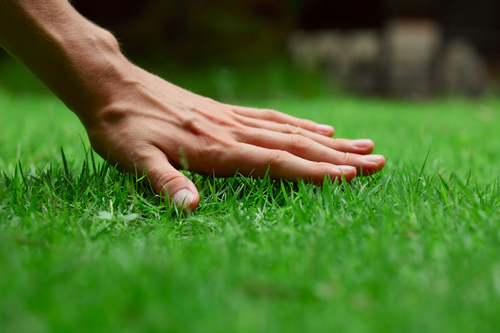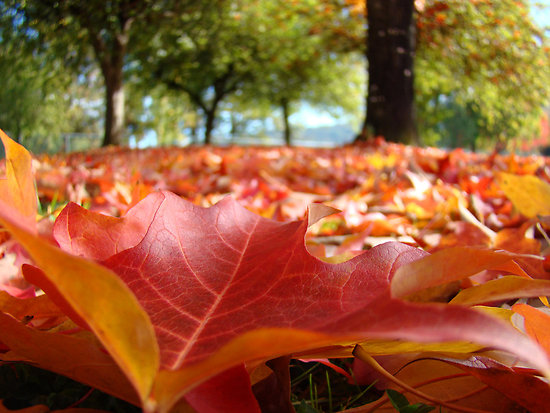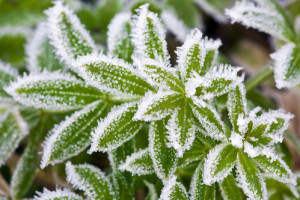Posts Tagged maintenance
Ways To Master Your Summer Lawn Care
Here are the Top 5 tips For Summer Lawn Care that can help you to achieve the best lawn.
- Starting Over – Cleaning Up –

The first thing you should start by doing is walking over your lawn and gather branches, twigs, leaves and any other debris that has accumulated and dispose of. (Or it can be thrown in the compost bin to later be used as mulch)
Cleaning up your lawn area should also include raking up any matted areas of the lawn which can encourage snow mold. Not only does this help to prevent any disease or insect infestation but at the same time it promotes better air flow throughout the turf and allows new grass blades to grow without difficulty.
- Protect Your Interest – Weed Control –
Weeds can definitely be a gardener’s worst nightmare and no matter how you try to get rid of them they keep coming back. Though you may not be able to stop them completely there are things you can do to keep them at bay. Weed control.
As part of your lawn care, it is very important to carry out weed control – applying an effective weed killer whether it be organic or inorganic before temperatures hit 55-60 degrees. If you wait until temperatures reach this point, conducting weed control will be pointless as weed seeds would have already begun to germinate.
- Kick Start Growth – Fertilizing –
Winter really signifies a dormant period for gardens and landscapes as your lawn and other areas tend to go into a slumber, however, fertilizing your lawn and other garden areas in the spring gives it a much-needed jumpstart.
This provides an intensified nutrient build up that will give your lawn and other areas the strength they require to withstand the heat and drought that follow in the summer months.
- Let It Breathe – Core Aeration
Just like weed control, it is important to core aerate lawns in the spring as part of your lawn care, before soil temperatures reach 55-60 degrees since this encourages aggressive weeds to populate void spaces in a lawn. Allowing water and air to reach root zones easily, core aeration is great for lawns and helps gardeners to quickly achieve new growth when they apply this useful tip.
- Repair And Rejuvenate Lawns – Re-Seeding Turf
Nine times out of ten winter will wreck havoc on your lawn and come spring the damage is done. Now what? Well, as long as the weather permits it how about doing some re-seeding?
This is a great technique gardeners can use to restore damaged areas of their lawns, however, it may be a bit tricky if you’re applying a pre-emergent weed control so it must be carefully done.
You see, pre-emergent weed control isn’t selective, meaning it will prevent ANY seed from germinating including those used to reseed your turf.
Usually, it’s recommended to hold off weed control to the latest point possible an to perform the turf repairs needed as early as possible so that the seeds have enough time to germinate and become established before weed killer is applied. If this is not possible, don’t skip your weed control instead wait until fall to perform any turf repairs necessary.
Bonus Tips For Lawn Care
- Mow Turf On A High Setting – You should adjust your mower to cut your lawn grass at the highest possible setting. Most turf types usually thrive better when blade heights are about 3 to 4 inches tall.
- When mowing Zoysia grass and Centipede grass, use the lowest setting. For Bermuda grass and creeping bentgrass, it’s best to remove only a third of the total grass blade length at a time.
- Applying mulch – Mulches help to provide essential nutrients and help with weed prevention and soil stability all season long be sure to apply some where necessary.
Contact the experts here at DK Landscaping – our expert team is on call to come in and assist you with any lawn care or gardening task that you have.
Give us a call at (707) 280-3632 or you can visit our website at dklandscaping.com for more information or book your appointment.
Practical Winter Gardening Advice For Homeowners
Are you looking to get the most out of your garden year-round? The good news is that a lot of common shrubs, plants and flowers do well against frost in more intolerant hardiness zones.
So, what is a hardiness zone and how does it affect your winter gardening? A hardiness zone is a map put out by the USDA that basically tells gardeners which plants work best in which climates.
General Winter Gardening Tips
What’s important to realize upfront is that plants that can withstand the frost usually enter a period of relative dormancy to survive the winter months.
So, what are some things that you can do to make this transition easier on your hardy plants and perennials?
- Remove Waste
Removing any refuse, blackened-out stems and leaves from annual flowers is a great way to lessen the possibility of pathogens in the soil harming your hardy plants during their dormancy period.
- Install a Cold Frame
A cold frame (more on this below) is a raised wooden structure with a plastic cover that can further help protect perennials and hardy bulbs against the elements.
Even when plants are considered perennial, they still might benefit from the protection that a cold frame offers – especially if the temperatures drop to below zero with the wind chill.
- Apply Winter Mulch
On the topic of mulching, you should also realize that a lot of your summer mulch may have already decomposed at the start of winter.
Laying down a fresh layer of winter mulch goes a long way towards protecting your hardy plants and underlying soil during winter.
http://gardening.about.com/od/winterinthegarden/a/WInter_Mulch.htm
You can actually work with the elements by turning the fall’s fallen leaves into a winter mulch that will stay frozen and protect your garden.
Winter Gardening Devices to Consider
In addition to paying attention to your hardiness zone, devices like a quick-hoop system, floating row cover, or cold frame can greater buffer those punishing winter winds and cold temperatures.
- Quick-hoop system
Quick-hoop systems are also called low tunnel systems, and by whatever name these structures have been known to protect your plants from winter’s frost.
Annual and perennial hardy plants are able to survive the rigors of winter, frost and heavy winds. This means that calendula, foxglove, pansies and peonies require little maintenance during winter beyond the protection from a low tunnel system.
Hardy plants like these require less light to develop fully and can withstand hard frosts. Hardier plants only require around four hours of sunshine every day and grow best in cooler conditions.
If you’re living in an area that gets less frost, then many of these plants can be grown throughout the winter months. It’s recommended, though, that you plant hardy plants when the soil temperature is around 40 degrees fahrenheit – perhaps in very late winter or very early spring.
Low tunnels provide more protection against cold temperatures, frigid winter winds, and more relative humidity than the surrounding environment.
http://www.motherearthnews.com/organic-gardening/low-tunnels-quick-hoops-zmaz09onzraw.aspx
- Floating Row Cover
Floating row covers are probably the most simple and straightforward form of winter protection.
Putting your hardy plants under a thin film can protect against cold, harsh winds and potential hail damage while allowing an extended growing season for hardy plants and perennials.
- Cold Frame
The most popular kind of cold frame is a portable cold frame encased in wood with a durable plastic cover to protect against the elements.
That said, there are three types of cold frames (pictured here) that can extend your growing season well past frost. For more winter gardening tips, contact the professionals at Xeriscape today.
Raking Leaves – for Aesthetics or Maintenance?
 As wonderful as Autumn is, removing the fallen leaves from your lawn in the late fall is not generally regarded as a fun task. It’s time consuming and a bit tedious. You’ll be glad to know the payoff for all your labor goes beyond simply enhancing the curb appeal of your property. Removing fallen leaves is not only vital for the health of your lawn, but the beauty of it as well.
As wonderful as Autumn is, removing the fallen leaves from your lawn in the late fall is not generally regarded as a fun task. It’s time consuming and a bit tedious. You’ll be glad to know the payoff for all your labor goes beyond simply enhancing the curb appeal of your property. Removing fallen leaves is not only vital for the health of your lawn, but the beauty of it as well.
Excessive leaf matter on your lawn going into winter is bad for several reasons. Why you might ask? When your lawn becomes buried in layers of leaves, it becomes smothered and is deprived of water, air and nutrients it needs to survive. Without proper leaf removal your lawn will also become a breeding ground for fungi, disease and insects. Additionally, when leaves shade the grass they prevent it from receiving the sunlight it needs to thrive. While a few scattered leaves on the lawn won’t do much harm, a heavy thick layer will. Leaves left in place over the winter often become compacted and cause extensive damage to your lawn which can lead to increased costs and maintenance in the Spring.
Instead of raking the leaves, wait until they’re good and crunchy (ripe for jumping into), and then mow the leaves into little pieces. Then, you can just leave them! The leaves will serve as mulch and will protect the soil around your trees, shrubs, or garden.
Another option you have is to compost your leaves, but you simply can’t rake up all your leaves into a big pile and expect them to compost themselves. Composting requires regular turning of the leaves as well as the right amount of moisture.
Want to leave the fall clean-up work load for someone else? DK Landscaping Services offers both leaf removal and fall clean-up services. These services help ensure your landscape is clear of debris and fallen leaves are removed, preventing mold and fungus from growing. Give us a call (707) 280-3632.
DIY vs. Hiring a Professional Landscaper

Every homeowner wants to have a beautiful, pristine and well-manicured landscape. Oftentimes, homeowners decide to design and maintain it themselves to save money. But the reality is, keeping your lawn well-maintained and healthy is a time-consuming job – fighting weeds, heat, debris and pests and trying to keep everything green and lovely. If you spend a lot of time at work, you may not want to commit your off days to yard work. So before deciding whether to continue do it yourself or hiring a professional landscape maintenance company, here are a few more things to consider may sway your decision:
Professional grade work – While DIY can be fun, unless you have some experience with these types of projects, this can end up consuming more of your time and can potentially end up to be disastrous. If you’re going for curb appeal or a professionally manicured lawn, a professional lawn maintenance company is the answer. With the right equipment and experience, professionals can get the job done quickly, efficiently, and beautifully while you focus on other things.
Knowledge –A skilled landscaper has knowledge that your average person doesn’t have concerning grasses, trees, shrubs, and plants. They know when to prune, what grows best where, and how to care for difficult plants. Having someone who knows the ins and outs of botany can be the difference in a mediocre backyard and one that all your neighbors are talking about.
Economical – Hiring a professional can sometimes be more economical. For a certain weekly fee, homeowners receive the benefit of professional knowledge and execution. Also, homeowners will not have the expense of purchasing the various tools and equipment necessary for lawn and garden maintenance, tools and equipment that include lawnmowers, weeders, edgers, fertilizer, grass seed, leaf blowers, and shovels.
Convenience – Lawn care will take you away from other activities like work, family time, entertaining friends and relaxation. Although you will pay for professional landscape maintenance, the convenience may justify the cost.
We at DK Landscaping also offer a spring-cleaning service that will help prepare your lawn and garden for the spring and summer months. It’s a time to prune the old and plant the new. We know exactly what needs to be taken care of this time of year and are ready to tackle even the most difficult home landscaping job.
Handing the reigns over to someone who landscapes for a living gives you freedom to enjoy your spring and summer without worrying about your projects going undone. Call Kathy or David Lee at DK Landscaping (707) 280-3632.
Got Curb Appeal?
First impressions are everything! The same concept holds true when speaking about your landscape. From a real estate perspective, a good first impression, aka “curb appeal” is about using your landscape to enhance the appearance of your home. Whether you want to boost your curb appeal, market the value of your home or simply want to transform your space to make your lawn & garden look pristine, DK Landscaping helps you come up with the inspiration for the look you desire and making your property the talk of the neighborhood:

Here are a few simple ways to enhance and maintain your landscape:
General maintenance: Mowing your lawn, pruning back trees/shrubs weeding, fertilizing, mulching, leaf and debris-free to watering will keep your yard looking beautiful and eye-catching throughout the entire growing season.
Visually inviting entryway: There are a lot of little things you can do to spruce up your front entryway including keeping it debris free. If you have an old, dull concrete stoop with cracks? Update to a beautiful stone stoop or porch.
Providing a focal point: Plantings, landscape lighting like lamp posts, and decorative pieces like a small water fountain are good ideas.
Colorscape: Adding a splash of vibrant annuals and perennials flowers and plants will make a big statement.
Landscaping lighting: A small yet impactful solution, outdoor accent lighting can not only enhance your yard aesthetically but also eliminate any dark, shadowy areas at night and prevent any safety hazards.
Updated driveway and/or walkway: If your driveway is old and outdated or starting to crack, updating it can have a big impact. There are pavers that imitate any stone for driveway landscaping—brick, travertine, limestone, etc. Same goes for any walkway in your yard. A new stone or paver walkway is a great front landscaping idea.
Stairways: Like retaining walls, stairs are ideal for hilly yards. Adding a staircase walkway to your sloped yard is a great way to add curb appeal—and give your visitors easier access to your door.
It is pretty easy to do many of these things yourself, but perhaps your front yard is devoid of plants and eye-catching features. You may consider planting a tree as a focal point, installing a trickling fountain, or even building a patio. In addition to these memorable details, it is important to use color to attract and focus attention on positive attributes of the landscape. This not only requires planning, but you may need a landscaping company to see some of these designs through.
Having good curb appeal makes selling your house easier, as potential buyers are looking for an aesthetically pleasing home. But don’t brush off having curb appeal even if you are not putting your house on the market. An attractive landscape design is always important!






